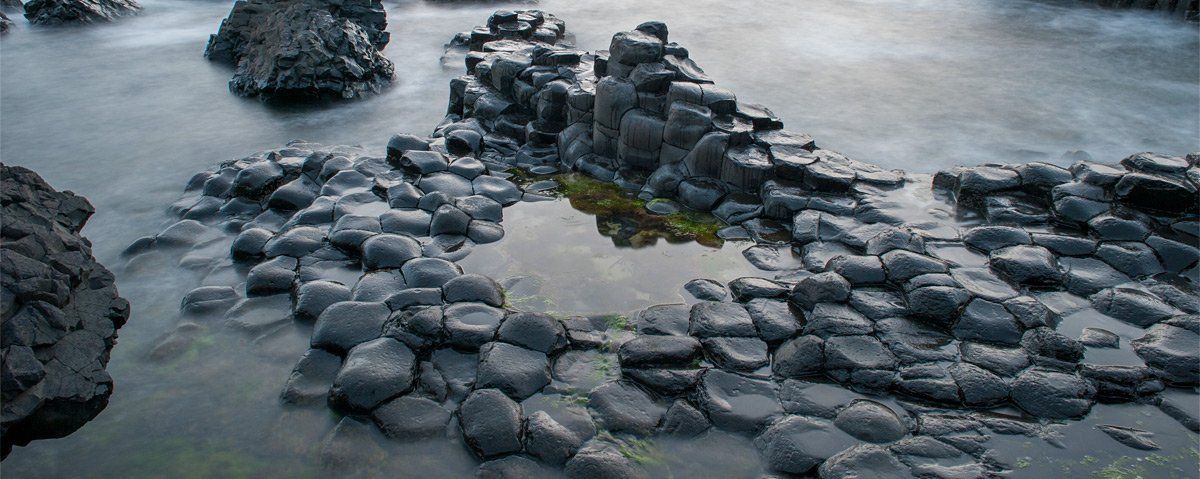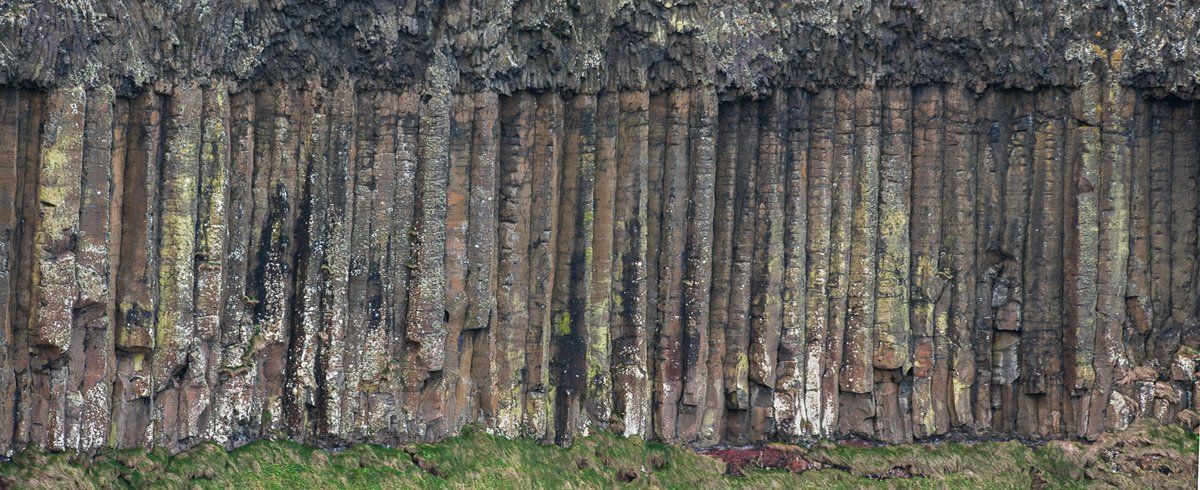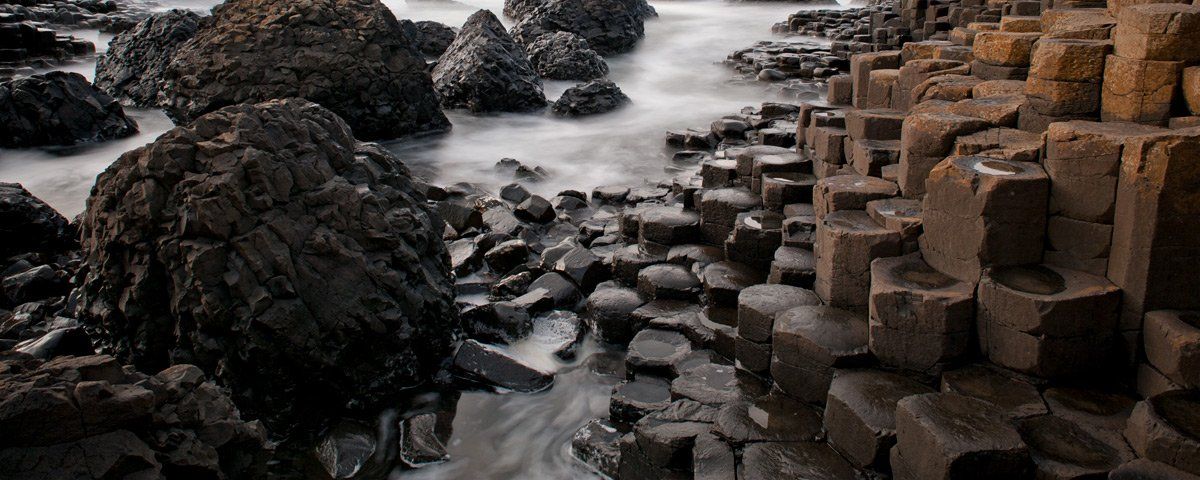Over 40,000 hexagonal columns exist at the Giants Causeway, though I know of no-one who has counted them, contrary to the opinion of Thackeray, who was far from impressed by the natural symmetry when he visited in 1842, the stones are impressive and a unique geological feature. They do outcrop in other parts of the world including America, Australia, Iceland, Vietnam and Scotland. They also outcrop inland and further along the north Antrim plateau. Many features in the surrounding columns have acquired identifiable names such as the 'wishing chair', 'the giant's boot', 'the ladies fan', 'the giant's organ', 'the camel's back', 'the granny rock', 'the giant's gate', 'the chimney stacks', 'the giant's chair', 'the giant's eye and eyeglass' to name a few.
The majestic bays of Port Ganny and Port Noffer sweep either side of the Grand Causeway lending to the drama of the location which lies directly below the towering Aird Snout. Other equally and more impressive bays are only viewable by boat, a service that local boatmen once undertook from the Brenther in Port na Boe below the Visitor Centre and close to the rock which resembles a sleeping camel. Today you can still get a boat to take you from Ballycastle or Portrush or if you're lucky Portballintrae. During the summer season, hundreds of thousands of people walk upon the stones, it becomes an international gathering point for the feet of the world to walk upon and the tongues of nations to fill the air.
The causeway area would have been situated in a sub tropical region at that time, at about the latitude of northern Spain, experiencing hot and humid conditions. This came about because the earth's crust is floating on moving plates known as 'tectonic plates', these move slowly but over millions of years they can travel thousands of miles. When the causeway was being created it would have been joined to the eastern seaboard of America, the International Appalachian Trail through the north of Ireland and into Scotland mark this geological fact. The hexagonal columns of the causeway occur in the middle basalt layer, the same formations can be seen at Staffa in Scotland (Fingal's Cave) and they also occur in the surrounding landscape of North Antrim and many other parts of the world.
While the Bishop may have brought knowledge of its existence to a wider world, the first people to discover this natural phenomenon would have been the Hunter and Gatherers who settled in the area known as White Park Bay after the last ice age, some 10,000 years ago. They would have travelled around the densely forested north coast by boat and almost certainly have come across the causeway and with no knowledge of natural forces, it would have left a lasting impression on these early settlers, who may have thought it was created by giants. The height of their technology at the time was making flint arrowheads using stone implement, so to find such precisely shaped stones would surely have left them some what puzzled for an answer as to how they came about.







